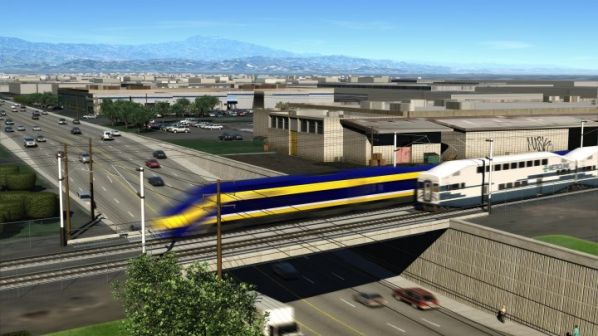Setton Academy for Industrial Robotics and Technology coming in 2021
Setton Farms has announced it will build a school in Terra Bella that will focus on industrial robotics and technology. The new school will be called Setton Academy.
In 2019, Setton Pistachio established a 501c(3) non-profit to develop and operate an industrial technology school. After a lengthy permitting process, the school was approved, and construction on Setton Academy began in summer 2020. DAYCO Construction and Industrial Design and Construction (IDC) are assisting with construction and materials. The school will be equipped with robotic and computer vision cells, as well as software development workstations for a hands-on laboratory experience.
“The school is a 501c(3),” said Setton Farms General Manager Lee Cohen “It’s an educational foundation that the family has set up to provide modern educational instruction in advanced industrial electronics and industrial robotics. We think that it’s a very effective way to change the trajectory of kids’ lives locally in Terra Bella.
“We are targeting students that are 18 to 23 year old high school graduates who we hope to basically give the requisite skills to change the trajectory of their lives to go into a pathway of industrial automation, which in today’s job market is very, very lucrative, high paying and very much in demand. The goal is really to go after the local kids who really wouldn’t have an opportunity like this.”
Once up and running, the Setton Academy will provide short certificate style courses that allow students to advance their education in industrial electronics, robotics and computer vision. The hands-on, module-based curriculum will be designed to focus on industrial automation control, robotics, computer vision and CAD design, and will allow students to learn at their own pace. The curriculum will cover subjects that match skills required in the broad industries throughout the Valley. All of the modules will be taught by industry professionals in a variety of methods ranging from live, hands-on instruction, to step-by-step videos and other interactive media modes.
“The school is going to be very modest and small,” said Cohen. “We’re going to try to take less than 30 students a year. If we can change the lives of 10, 20, 30 kids a year, over 10 years we’ll really have made a big difference in Terra Bella, and I think that’s the goal. The non-profit is going to be focused on providing access to these kids, providing very simplified and well designed curriculum, so that we can really utilize the state of the art of modern industrial robotics and technology, which really now is very accessible to these kids, because everyone of these kids probably has a smartphone and knows how software works, and I think the modern state of industrial automation is more accessible to them these days because of that.”
The goal of Setton Academy is its graduates acquire the necessary industrial technology and robotics skills to bring immediate value and productivity for employers who utilize production automation. If the school can achieve its goals, it could potentially change the pathway of its graduates’ lives from a minimum-wage, low-skill trajectory into a highly paid, high-skill, high-growth job trajectory.
“I think across the Valley, certainly in Agriculture, there’s of course ways of automation due to the difficult operating environment and higher costs across every aspect,” said Cohen. “I think nationally we will resort to automation to offset those costs in the long run, and I believe that, probably at this point in time, there aren’t enough educational institutions that are focusing on the people who will be operating, managing, interacting and designing this wave of automation that will be progressing through the Valley. I think it’s very within reach of all of these kids, absolutely. We just have to put together the right curriculum, the right delivery, the right program. So what we’re doing is bringing the education locally in town. They can walk to us. That’s the objective; this local education delivering really very market focused principles of education.”
Future goals for Setton Academy include developing a network of hiring companies that will source automation operators directly from the school.
“We are encouraging the community to get involved,” said Cohen. “We are looking for community members who can sit on a committee or some kind of advisory council. We want the community completely involved in this.”
The school is aiming to be completed by the summer of 2021.
https://www.recorderonline.com/news/setton-academy-coming-in-2021/article_bf4b6b5a-ff48-11ea-8a87-4f3360aea47c.html?utm_medium=social&utm_source=email&utm_campaign=user-share

